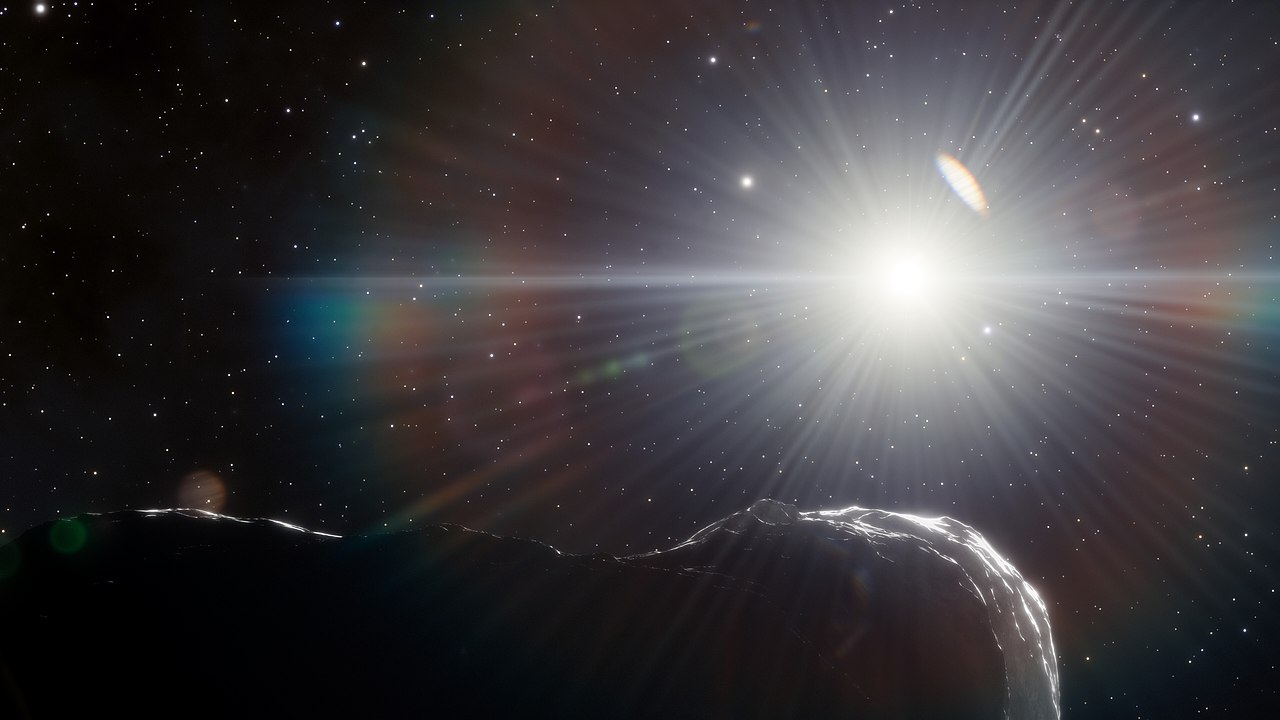How can you tell the difference between a spaceship and a space rock? The question is very difficult. So much so that astronomers almost fell over themselves when, in 2017, they discovered the first recorded interstellar object, 'Oumuamua, a celestial body passing through the interior of the solar system.
Astronomers once believed that any object moving at its own speed without having a visible means of propulsion could only be created by artificial technology. They knew how it should behave if it were an interstellar space rock, or so they thought, but in every respect it was behaving quite the opposite, it turns out. Space.com website From his article.
As 'Oumuamua flies through the solar system, it only has a few weeks to be spotted around the world. These revealed that the object came from outside the solar system and is very elongated. 'Oumuamua did not show a comet-like plume, but it kept moving under its own force.
Comets also move with their own momentum, while beautiful plumes emerge from dust and ice rising from their surface, which also has a rocket-like reaction. 'Oumuamua was different. Its mysterious way of flying through our solar system suggests an artificial origin.
How many “tourists” are still in the solar system?
The actual explanation deduced from its movement and the amount of energy it receives from the sun is equally strange. In essence, it is an entirely new type of object, dubbed a “dark comet.” Since the discovery of 'Oumuamua, we have found a group of seven dark comets hiding among the asteroids of our solar system. They get their name from the fact that they move like comets, but they don't have plumes of dust.
Visitors from beyond the solar system have long sparked the imagination of science fiction writers, but in reality it's not easy to pinpoint what we might see. Nor how many space rocks there are between the stars Or a spaceship Its presence near the Earth at a certain time. This difficulty has been encountered when trying to decipher the meaning of 'Oumuamua, but with new telescopes astronomers will have the tools to understand future interstellar travelers. We can expand our view of the universe.
If James Webb had been around when 'Oumuamua was discovered, we could have taken more detailed images of the object and gained information about what light looks like at different wavelengths. This would give us a better understanding of what moves it through space.
We would have seen molecules such as water or carbon dioxide that can only be seen at certain wavelengths and do not reflect sunlight. We routinely see comets in the normal solar system hurtling forward as their surface heats up, turning water and carbon dioxide ice into gas. Initially we had identified it as a dark comet-like object. The good news is that if we discover another 'Oumuamua, we'll know what we're up against.
New instruments will soon be used to observe solar system objects
In the future, JWST will not be the only powerful tool in our toolbox. The Large Synoptic Survey Telescope (LSST), which could become operational in about a year, will be able to detect more interstellar objects and will be able to identify dark comets in our solar system. Located in the Atacama Desert, LSST is a prime sky observing site, and will survey the entire Southern Hemisphere sky almost every night.
LSST will be able to detect fainter objects than any of our surveys, which scan the entire sky for fast-moving objects. It will be able to discover mysterious celestial bodies such as 'Oumuamua. LSST will also be able to find many smaller asteroids and will be able to detect whether they are dark comets and moving under its own force.
It is possible that when LSST is first turned on, we will detect interstellar objects on a monthly or even weekly basis. Some can be dark, like 'Oumuamua, and some are brighter, with beautiful plumes, like the second interstellar comet, 2I/Borisov.
The sky near Earth may turn out to be full of interstellar objects even smaller than 'Oumuamua, all of which were invisible until now. It is very plausible that these tiny interstellar visitors are constantly gliding closer to Earth within the solar system. If so, LSST might discover an interstellar target close enough for a targeted space mission.
A close encounter with an interstellar visitor can no longer be just a figment of the imagination of science fiction writers.
Worth reading:












































